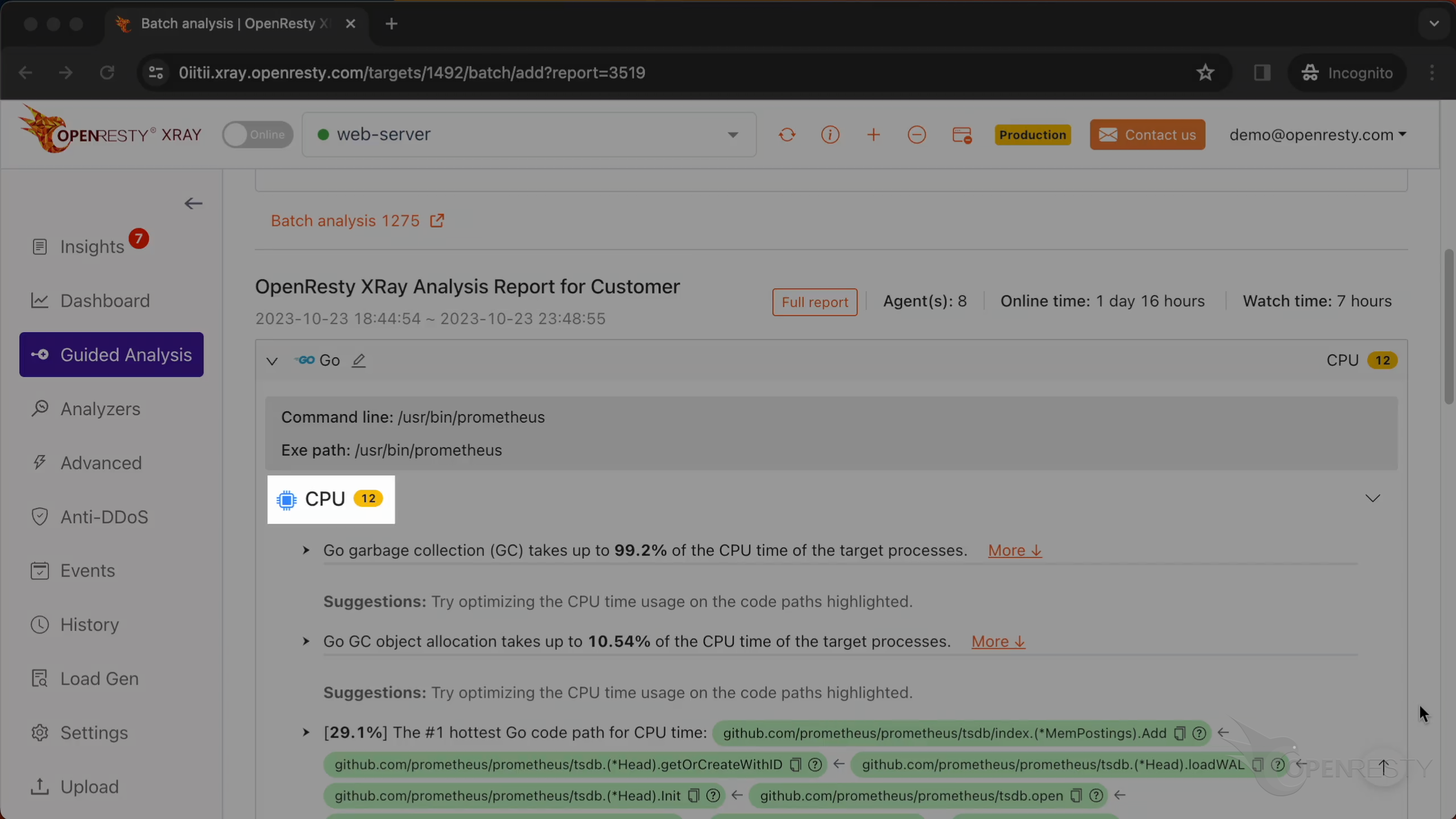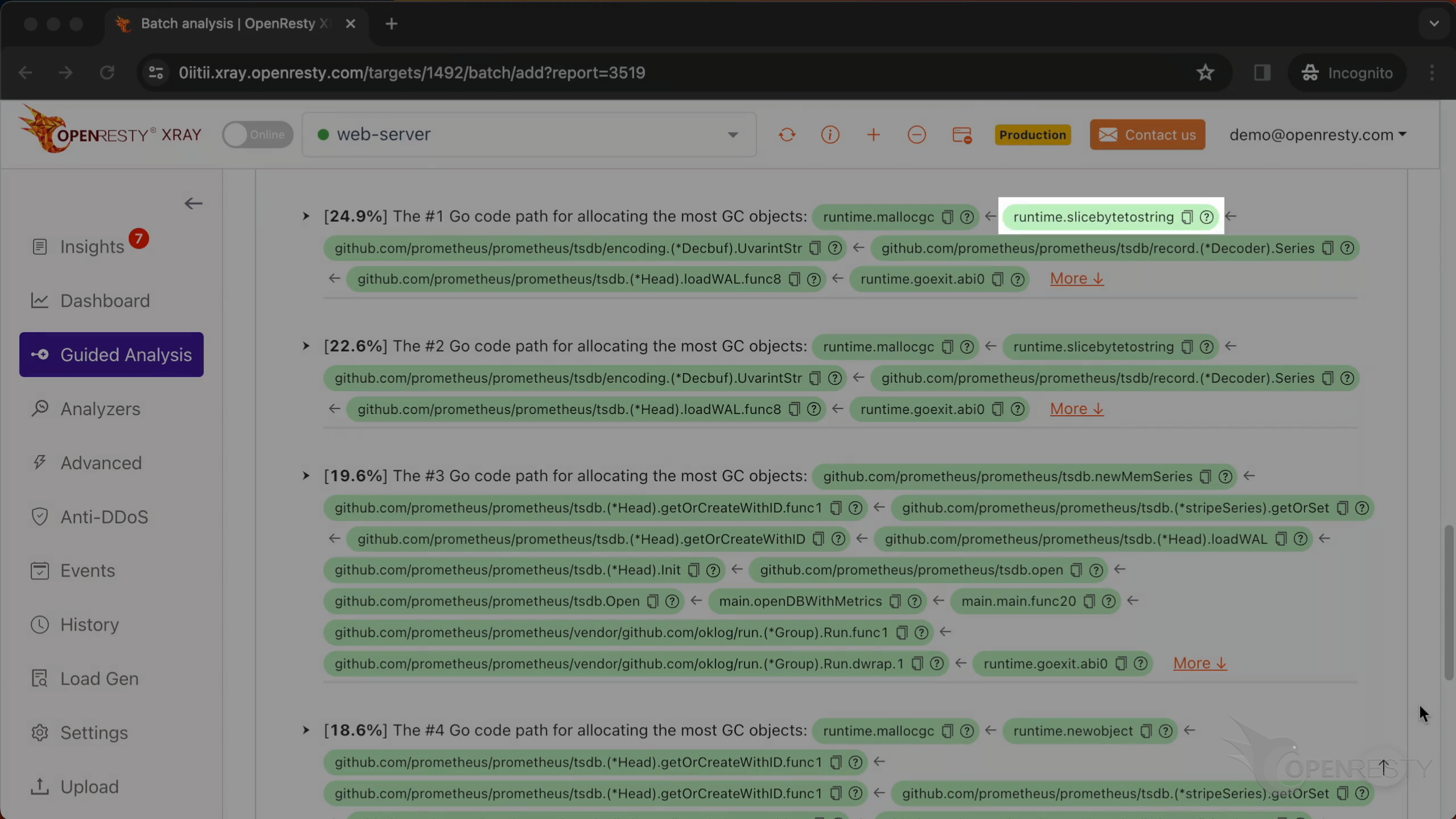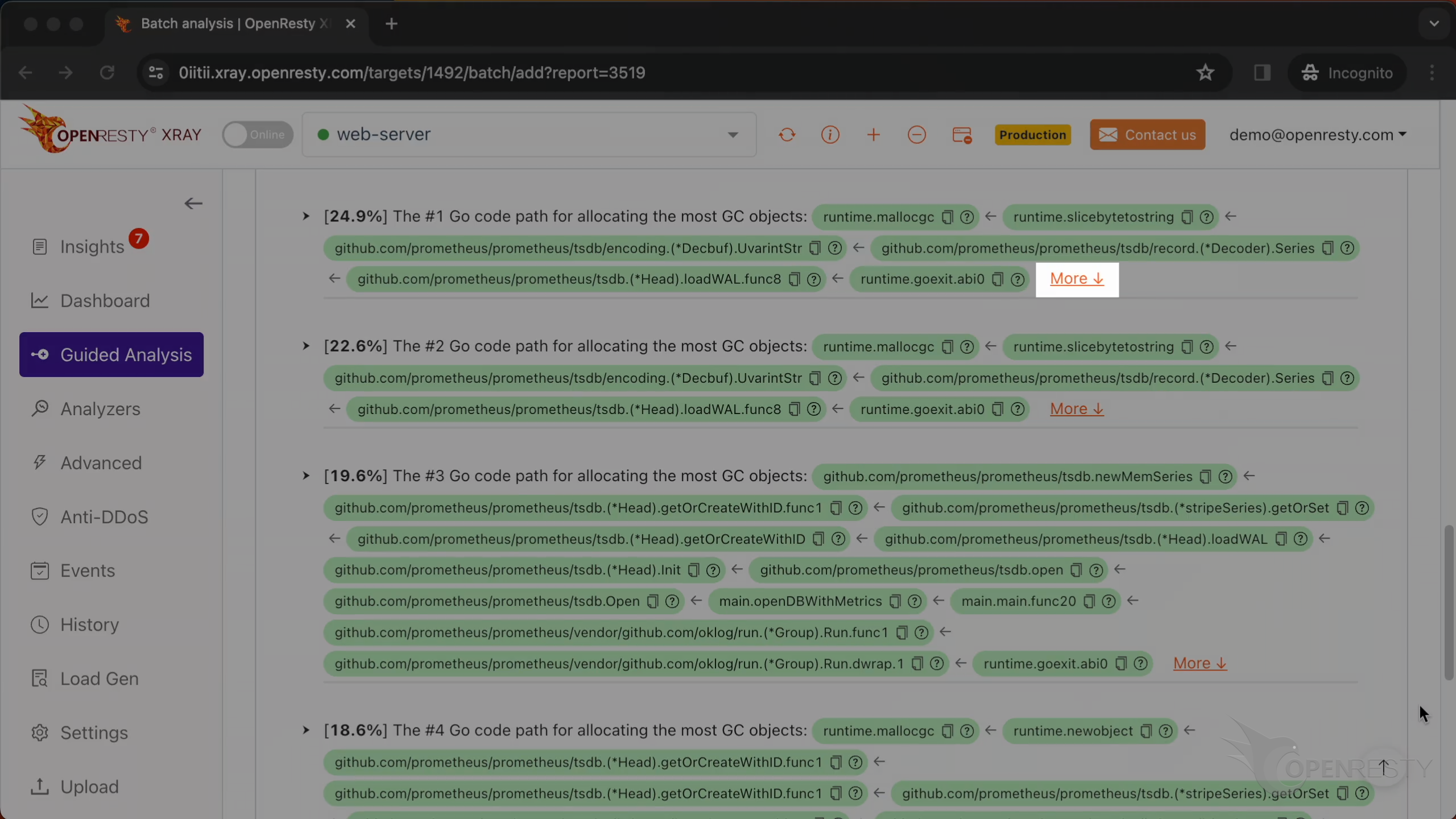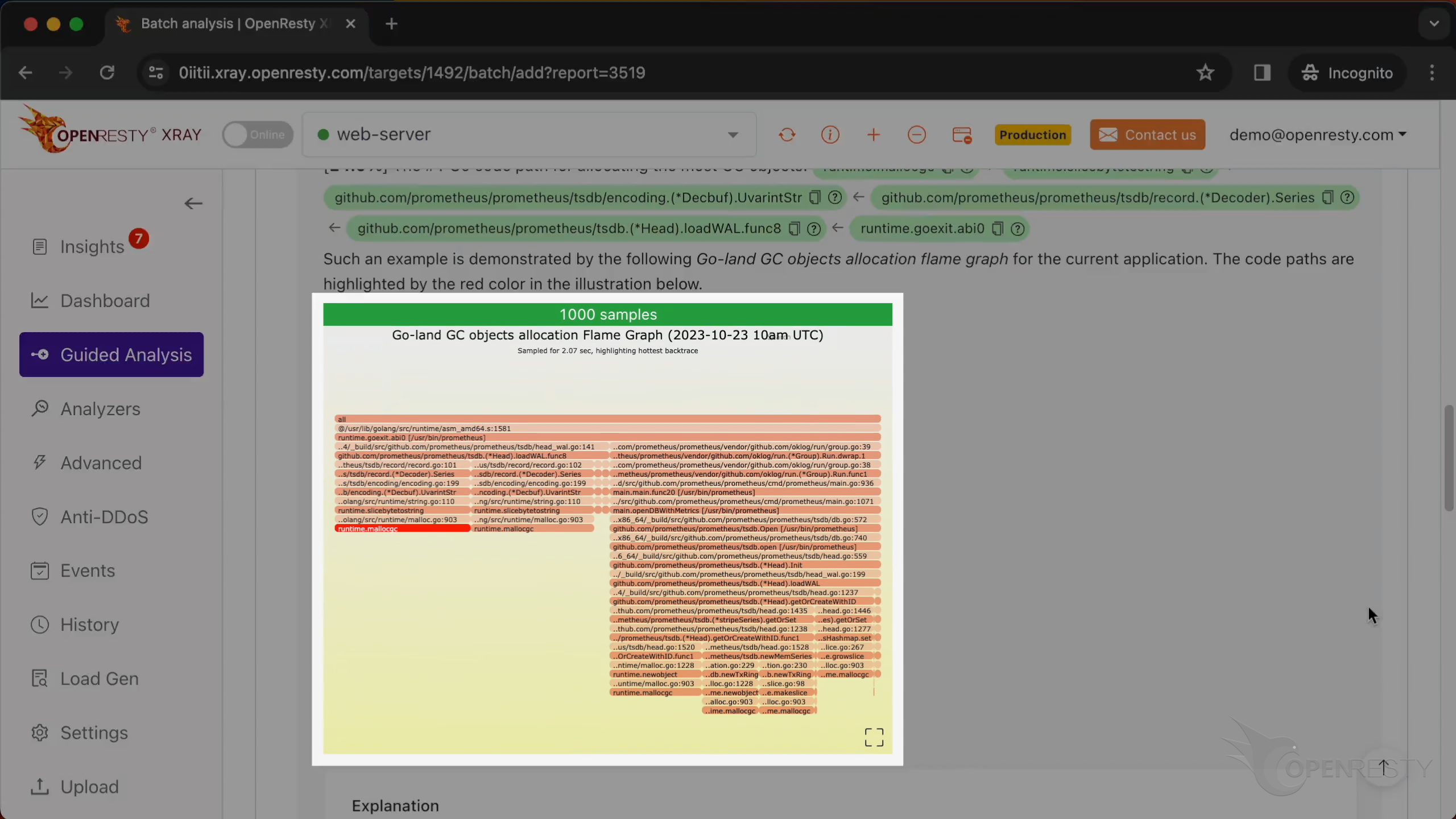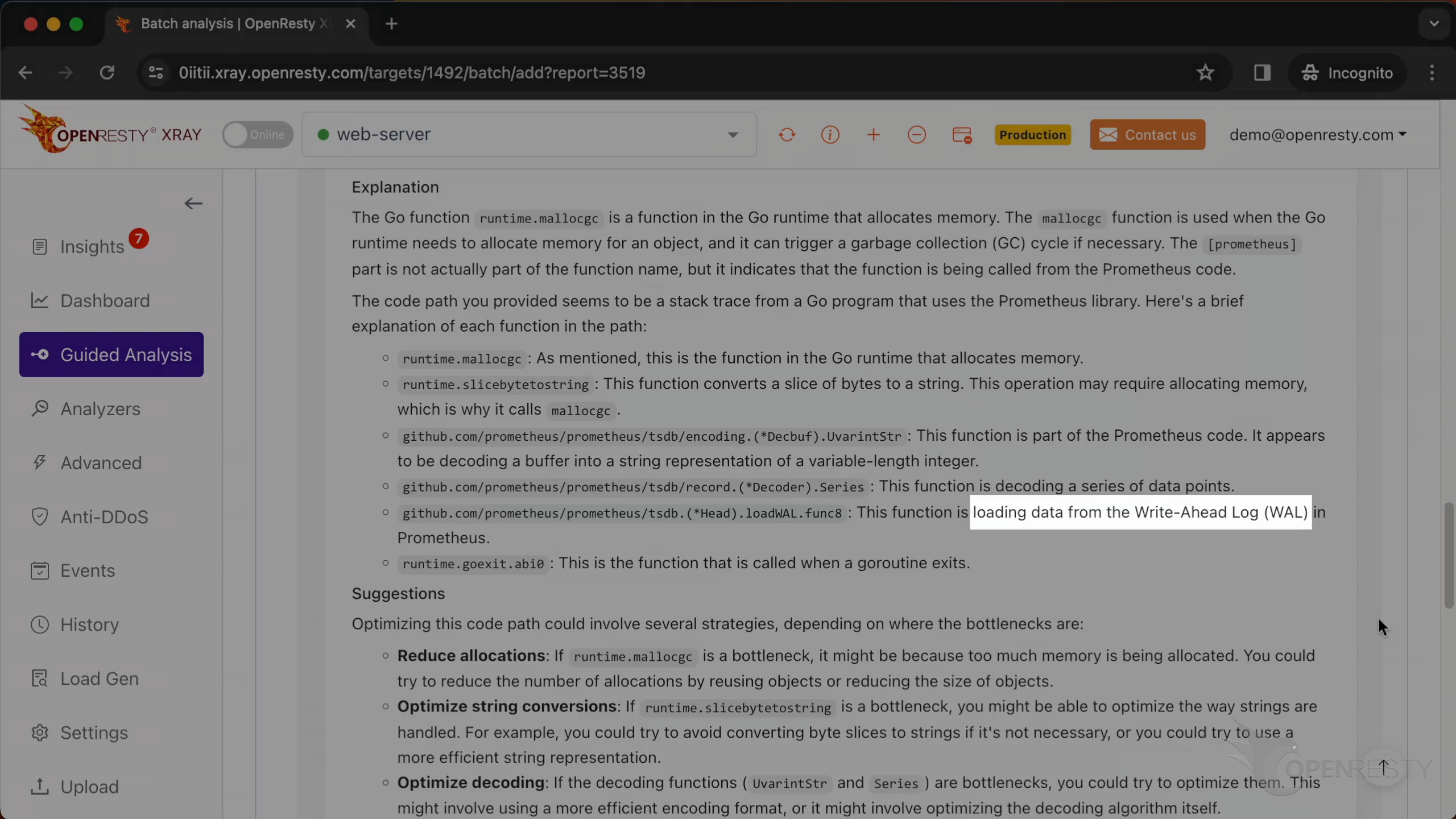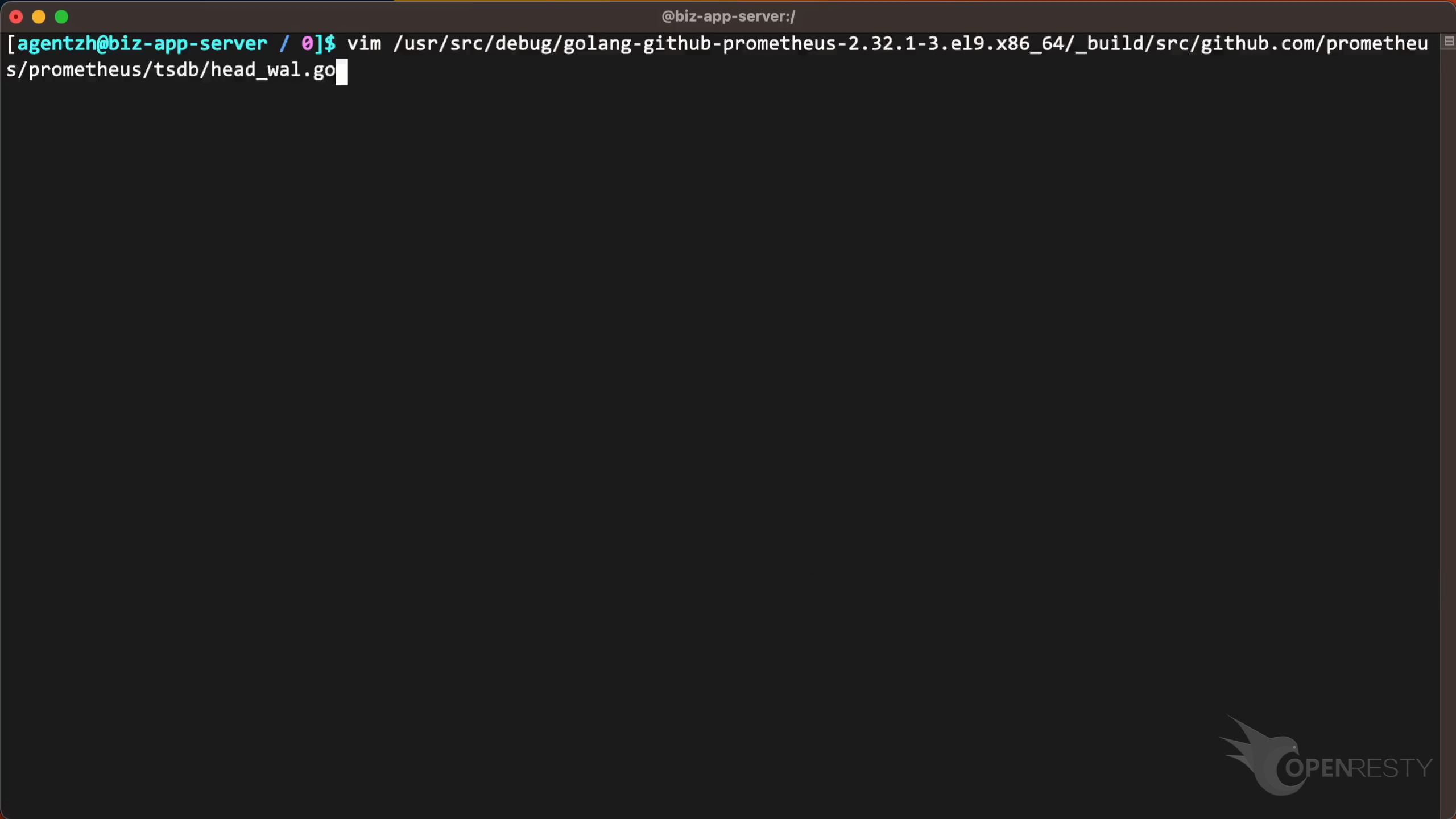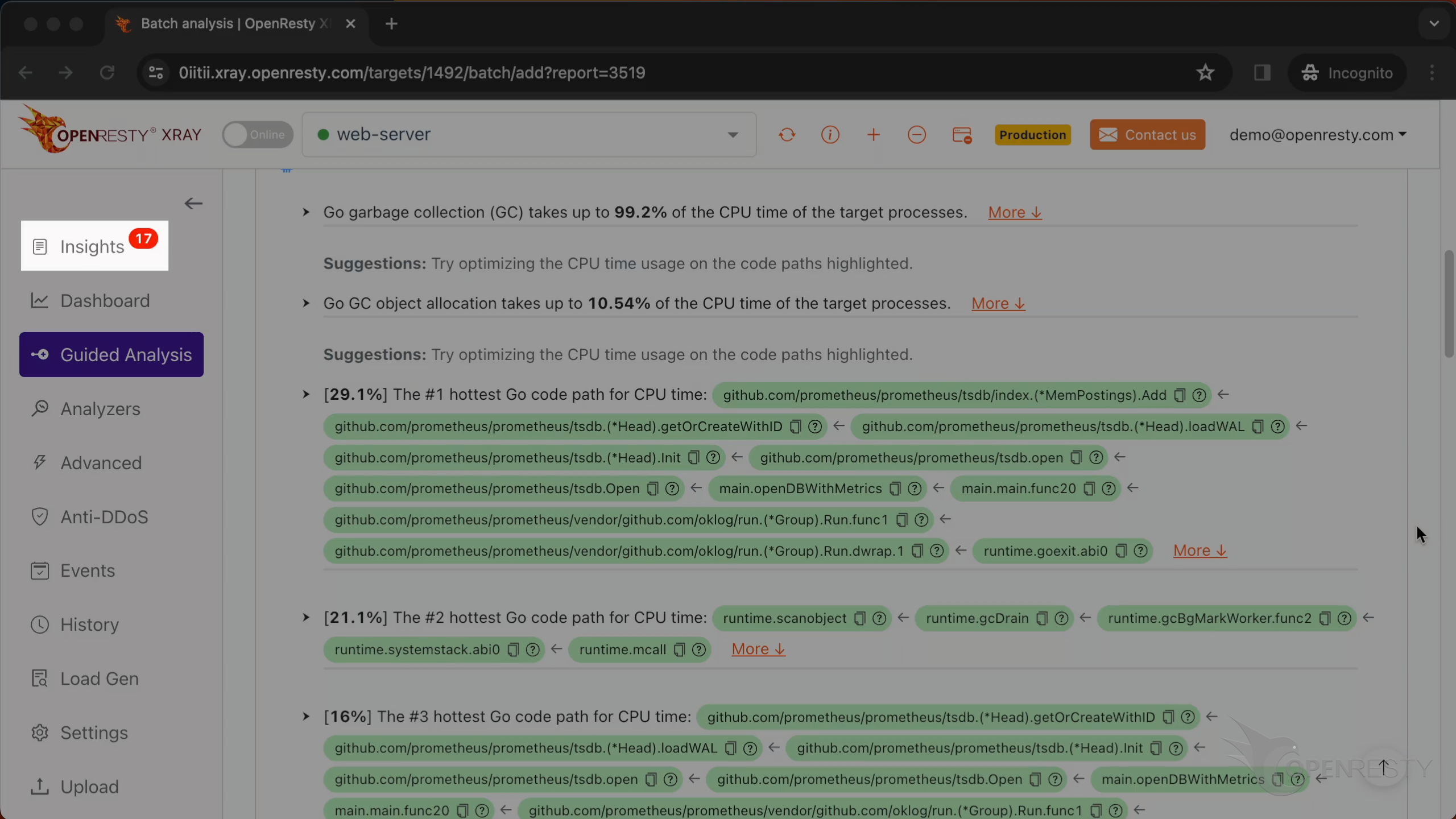Pinpointing CPU-Hottest Go Code Paths Inside Prometheus (using OpenResty XRay)
In this tutorial, you will get a step-by-step tour of how to use OpenResty XRay to identify the most CPU-intensive Go (golang) code paths of an online Prometheus server. These code paths are the ones that consume the most CPU time and severely affect Prometheus’ performance.
Problem: high CPU usage
Let’s start by running the top command to check the CPU usage.
As shown, the Prometheus process consumes 160% of CPU cores.
Run the ps command to see the full command line for this process.
We can see it is the standard Prometheus binary executable shipped with the Linux distribution.
Use the guidede analysis feature of OpenResty XRay to spot the CPU-hottest Go code paths
Let’s use OpenResty XRay to check out this unmodified process. We can analyze it in real time and figure out what’s going on.
Open the OpenResty XRay Web console in the web browser.
Make sure it is the right machine you are watching.
You can choose the right machine from the list below if the current one is not correct.
Go to the “Guided Analysis” page.
Here you can see different types of problems that you can diagnose.
Let’s select “High CPU usage”.
Click on “Next”.
Select the Go application.
Select the process consuming 120% of the CPU resources. This is what we saw previously in top.
Make sure that the application type is right.
Usually the default should be correct.
The language level is just “Go”.
We can also set the maximum analyzing time. We’ll leave it as 300 seconds, which is the default value.
Let’s start analyzing.
The system will keep performing different rounds of analysis. Now it’s executing the first round.
The first 2 rounds are done and it’s on to the third one already. That’s enough for this case.
Let’s stop analyzing.
It shows that the system is generating a report.
We can see it automatically created an analysis report.
This is the type of problem we diagnose. It’s “CPU”.
As you can see, the Go garbage collection takes up more than 99% of the CPU time.
For example, this Go code path where garbage collection is performed takes up to 21% of the CPU time.
The Go runtime function scanobject belongs to the garbage collector. It scans GC objects in the heap and marks reachable ones.
The function gcDrain is used to drain the work queue of GC objects that need to be marked.
Fast allocation of many GC objects incurs high GC overhead. So the report shows the hottest Go code paths allocating the most objects with the highest speed.
Now let’s check the #1 Go code path that allocates the most GC objects.
The function loadWAL is loading data from the Write-Ahead Log in Prometheus.
The function Series decodes time series data from the buffer and appends to the given slice.
The function slicebytetostring converts a slice of bytes to a string.
Click “More” to see more details.
This code path was automatically inferred from this Go GC object allocation flame graph.
Below are more explanations and suggestions about the issue.
It mentions the function loadWAL.
and this function is loading data from the Write-Ahead Log.
It also mentions the function Series,
and the function slicebytetostring.
Let’s go back to the code path. Hover the mouse over the green box for the function loadWAL.
We can see its source file and the full path for this file in the tooltip.
The source line number is 141.
Click the icon to copy the full Go source file path for this function.
Use the vim editor to open the source file. And look at the golang code in this file. You can use any editors you like.
Go to line 141, as OpenResty XRay suggested.
The function dec.Series is to decode a set of time series from a record.
On the status bar, you can see that this source line is inside the loadWAL function as shown in the report.
The TSDB of Prometheus creates a memory series to manage the most recent data. The number of GC objects newly allocated by this code path exceeds 19% of the total new allocations.
And we can see here that dynamically allocating new GC objects takes up almost 11% of the CPU time. So such allocations not only incur high garbage collection overhead but are also expensive themselves.
Automatic analysis and reports
OpenResty XRay can also monitor online processes automatically and generate analysis reports.
Go to the “Insights” page.
You can find the automatic reports on the “Insights” page for daily and weekly periods.
For this reason, you don’t have to use the Guided Analysis feature. Guided analysis is useful for application development and demonstration purposes.
What is OpenResty XRay
OpenResty XRay is a dynamic-tracing product that automatically analyzes your running applications to troubleshoot performance problems, behavioral issues, and security vulnerabilities with actionable suggestions. Under the hood, OpenResty XRay is powered by our Y language targeting various runtimes like Stap+, eBPF+, GDB, and ODB, depending on the contexts.
If you like this tutorial, please subscribe to this blog site and/or our YouTube channel. Thank you!
About The Author
Yichun Zhang (Github handle: agentzh), is the original creator of the OpenResty® open-source project and the CEO of OpenResty Inc..
Yichun is one of the earliest advocates and leaders of “open-source technology”. He worked at many internationally renowned tech companies, such as Cloudflare, Yahoo!. He is a pioneer of “edge computing”, “dynamic tracing” and “machine coding”, with over 22 years of programming and 16 years of open source experience. Yichun is well-known in the open-source space as the project leader of OpenResty®, adopted by more than 40 million global website domains.
OpenResty Inc., the enterprise software start-up founded by Yichun in 2017, has customers from some of the biggest companies in the world. Its flagship product, OpenResty XRay, is a non-invasive profiling and troubleshooting tool that significantly enhances and utilizes dynamic tracing technology. And its OpenResty Edge product is a powerful distributed traffic management and private CDN software product.
As an avid open-source contributor, Yichun has contributed more than a million lines of code to numerous open-source projects, including Linux kernel, Nginx, LuaJIT, GDB, SystemTap, LLVM, Perl, etc. He has also authored more than 60 open-source software libraries.























